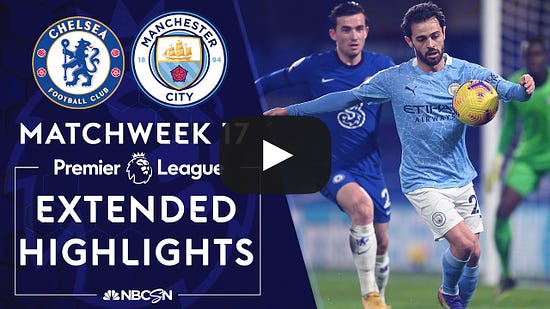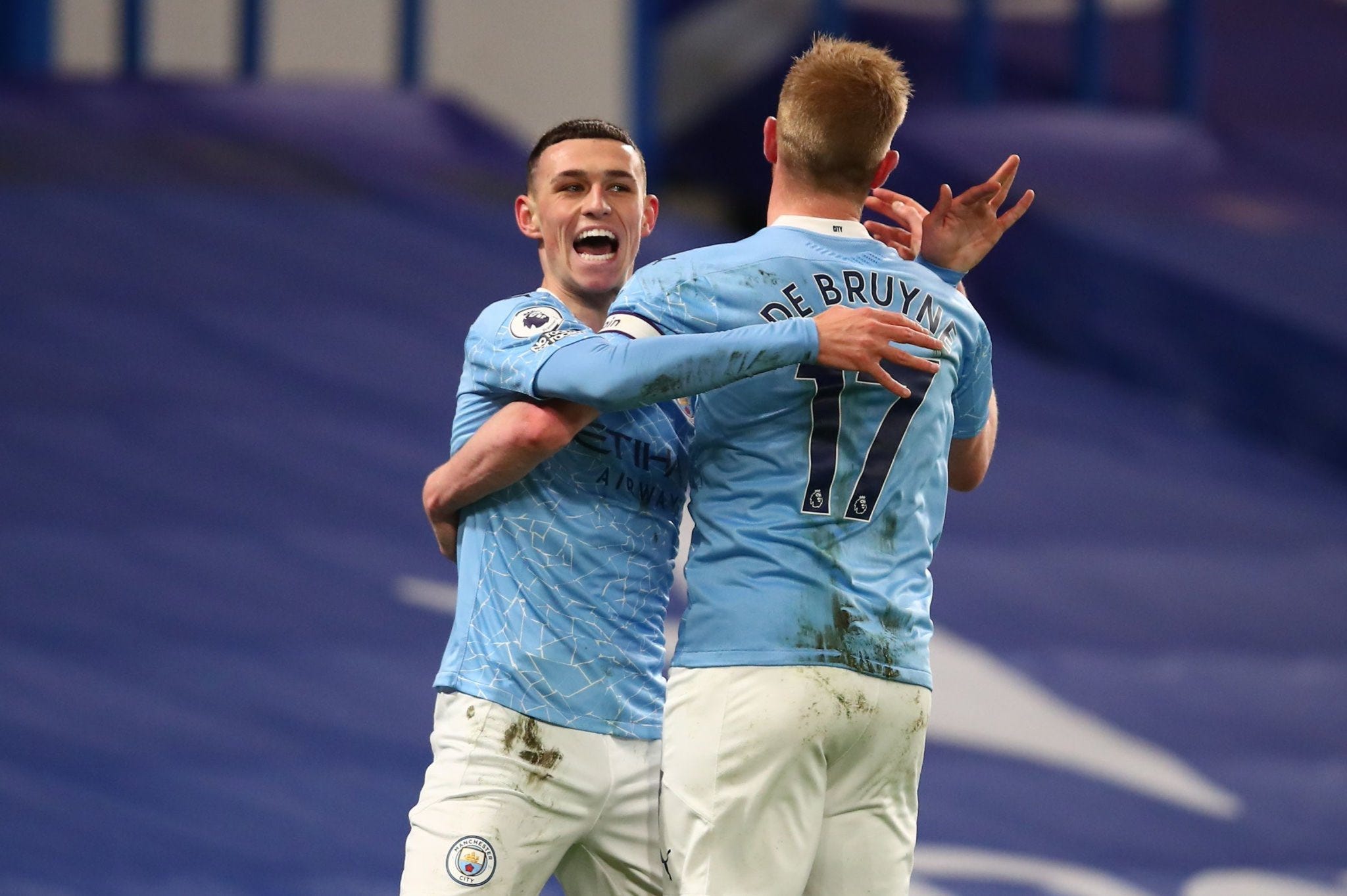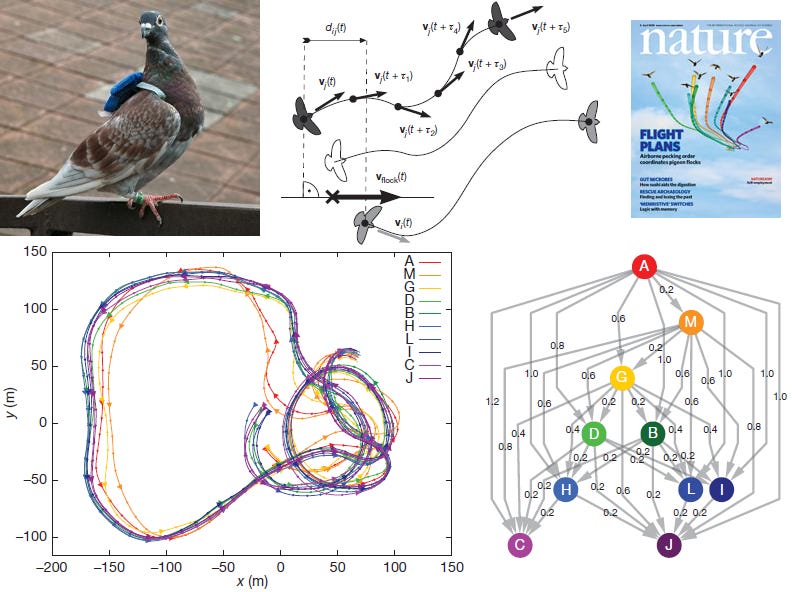If you watched Sunday’s Premier League match between Chelsea and Manchester City, perhaps you had a similar pre-game reaction to me: Wow, those lineups seem pretty evenly matched! Despite finishing an average of 24 points behind City over the past three seasons, a couple years of savvy spending and prospect development from Chelsea -- and the opposite from Manchester -- seemed to have closed the gap between the two teams. Even just comparing the player ratings from the video game FIFA for each team’s starting eleven suggested as much: the talent levels on these two teams were not all that different.
So, what followed cannot be explained by the quality of the individual players. What followed, then? Complete domination, a 3-1 City road win that could’ve and maybe even should’ve been worse. It wasn’t just that Pep Guardiola’s team doubled up Chelsea’s total attempts on goal, either: 18 to 9. No, they looked like they were playing a different sport.
City’s players appeared to have some kind of intuitive understanding of each other’s movements. They moved both unexpectedly and in synchronicity. The timing of their runs and passes almost felt like they were being counted on some timescale inaccessible to Frank Lampard’s players, who spent the whole game being baffled by the decisions their opponents were making. Chelsea, on the other hand, actually had more possession -- and importantly, more final-third possession -- than City, but there was nothing dynamic, nothing surprising about the way they moved with the ball. It looked like 11 talented stars who’d only just met that morning, competing against a group of guys who’d played together since childhood.

But if the talent of the players doesn’t serve as a satisfactory explanation for Sunday’s result, then what does? To answer that question, take your eyes off the field, and look up toward the sky.
Rui Marcelino realized that something was missing when he read about the pigeons.
In a 2010 issue of the leading scientific journal Nature, a group of Hungarian research published a paper called: “Hierarchical group dynamics in pigeon flocks.” Up until that point, pigeon behavior had only been studied through mathematical modeling that tried to accurately, well, model the flight patterns of flocks of birds. However, these researchers were able to attach miniature backpacks with GPS devices to a group of pigeons -- wait ‘til you see the picture -- which enabled them to actually record how the birds moved, rather than predicting how they should be expected to move.
You’ve seen a flock of birds before, and perhaps you’ve taken it for granted, but take a second to consider what a marvel their movements are. The birds travel in near perfect unison, diving and cutting and ascending as if they were all connected by some invisible, imperceptible string, a single brain, or a hidden remote control. What the authors of this new paper wanted to understand was how the birds achieved such an impressive physical harmony.
What they found was that each flock maintained a strongly defined social hierarchy, which could easily be predicted by a bird’s place in the flock. In other words, certain birds controlled the flock’s movement, as they’d make the first move and the other birds would immediately react. “From an evolutionary perspective,” the researchers concluded, “our results suggest that hierarchical organization of group flight may be more efficient than an egalitarian one, at least for those flock sizes that permit regular pairwise interactions among group members, during which leader–follower relationships are consistently manifested.”
After reading the paper, Marcelino, a lecturer at the University Institute of Maia in Portugal, wondered if a similar line of inquiry -- how do individuals influence and how are individuals influenced by their systems -- could be applied to the world’s most popular sport. “Players do not play alone,” he said. “They move together, and as such, it makes perfect sense to try to understand which rules govern these movements.”
Thanks to Marcelino’s latest work, we’re closer to understanding those movements than we’ve ever been before.
In September, Marcelino and a group of researchers, which includes one of the guys from the pigeon paper, published a paper called “Collective movement analysis reveals coordination tactics of team players in football matches” in the wonderfully named journal Chaos, Solutions & Fractals. Using GPS tracking data -- but no mini-backpacks this time -- they studied five matches from the 2016-15 Bundesliga season. “What we tried to do here was to exactly understand the characteristics of interaction/cooperation between soccer players in their movement in play,” Marcelino said.
By analyzing the movement of players, they developed something called a highly correlated segment (HCS), which is essentially a measurement of how correlated a player’s movements are with his teammates and his opponents. At the team level, Marcelino and Co. found that the best defenses earned high HCS scores both in comparison to their teammates and their opponents. Meanwhile, the best attacking teams had low HCS values in comparison to their teammates and their opponents. This makes sense intuitively: good defenses move in unison and follow the movements of opposition attacking players, while great attacking teams move in all kinds of unexpected ways -- like City on Sunday.
This specific aspect of Marcelino’s work reminded me of Arsenal. Under Arsene Wenger, the team always attacked proficiently no matter the teams other issues, offering beautiful, unexpected final-third movement all the way through his final season with the club:

Today, the club still has plenty of talented, accomplished players who have experienced individual success at other clubs, but Wenger is gone and the final-third movement is now often too correlated, leading to an over-reliance on crosses into the penalty area. Once it's developed further, perhaps Marcelino’s research could be used to understand the effectiveness of individual managers.
While the paper wasn’t concerned with individual coaches, it does look at the performance of individual players -- all of which jibes with the team-level findings. The players on the best defensive teams maintained a higher HCS score both with their teammates and their opponents, moving in the same organized way we’d recognize those flocks pigeons to be moving. With attackers, it was the opposite. In fact, the researchers found a relationship between a player’s crowd-sourced value on the site Transfermarkt and his HCS; the less correlated a player’s movement was with the other players on the field, the more valued he was in the market. This, once again, scratches at our intuition: the best attackers are so often described as “creative magicians” who see passes or runs that no one else could see. Think of them like the pigeons at the top of the social-hierarchy, making everyone react to their decisions.
While none of those specific findings seem counter-intuitive, that’s sort of the point. “More than contributing to a very specific and concrete knowledge of the rules that govern the players' movement, we tried to demonstrate scientifically that our method does exactly what we intend it to do,” Marcelino said. “This kind of result served precisely that: to be sure that the method is capable of interpreting and unveiling the dynamics of movement (coordinated and uncoordinated) inherent to a soccer game.”
What surprised Marcelino most about his group’s work is that each individual player seemed to have a consistent HCS score both from half to half and from game to game. (One team they studied played in two of the five matches.) Put another way, each individual portrayed his own specific form of collective behavior. “We advocate that there is an individualized profile in the way players interact with their colleagues (not so surprising since they train together) and with their opponents,” Marcelino said. “Since they do not train together, it is extraordinary how the dynamics that we found in different games remained really similar”.
There is plenty still to be done with this line of work. After all, they only looked at five games. Marcelino says they next plan to look specifically at transition moments -- what kind of behaviors occur when neither team is in possession of the ball, what makes a team succeed in recovering the ball, where do the correlations point? On top of that, there are all kinds of ways a more robust form of an HCS rating can be used in game-to-game preparation, scouting, and team selection.
But more than that, this work begins to shine a light through a bit of the darkness that still covers up most of what we could potentially know about soccer -- or any other sport, for that matter. For example, it sure seemed like Real Madrid kept getting lucky across their run of three Champions League titles in a row and four in five years, as they pulled off a number of last-second victories and seemingly unlikely wins in matches where they didn’t create near the same number of chances as their opponent. The tools we have to measure performance in soccer -- namely, expected goals, which, on aggregate, accurately estimate how many goals a team should score -- certainly emphasize that randomness plays a bigger role in the outcomes of matches than anyone would like to admit. But really, we don’t actually know if that’s true. It’s only true based on models built on the knowledge we currently have.
In a piece for Aeon, Cade Massey, a professor at the University of Pennsylvania Wharton School who famously studied overconfidence among NFL teams during the amateur draft, and Jessica Flack, a professor at the Sante Fe Institute, compared the overconfidence in available statistics in sports to one of the fallacies that led to the disastrous Vietnam War. As they write:
The problem is so common it has its own name: the McNamara fallacy, after Robert McNamara, the US defence secretary known for a slavish devotion to numerical analysis during the escalation of the Vietnam War. ‘The first step is to measure whatever can be easily measured,’ wrote Daniel Yankelovich in Corporate Priorities: A Continuing Study of the New Demands of Business (1972). ‘The second step is to disregard that which can’t be easily measured … The third step is to presume that what can’t be measured easily really isn’t important … The fourth step is to say that what can’t be easily measured really doesn’t exist.’
They go on to cite the fact that fireflies are able to sync up their lighting patterns or that frogs can coordinate their “ribbit” sounds. If those biological processes have been observed and proven, then why wouldn’t a basketball team lock into a similar form of synchronicity at certain moments? Or why couldn’t those Real Madrid teams reach some deeper level of connection at the most decisive game states in order to score when it mattered most? For now, it looks like luck, but maybe one day, as Marcelino and others continue to develop their research into collective behavior, we’ll be able to understand it -- and appreciate it -- as something else altogether.


